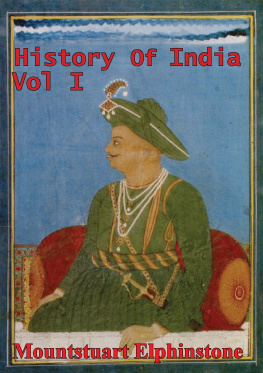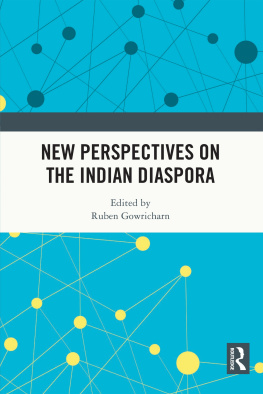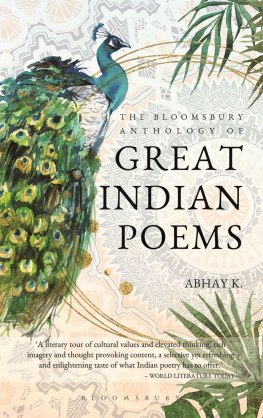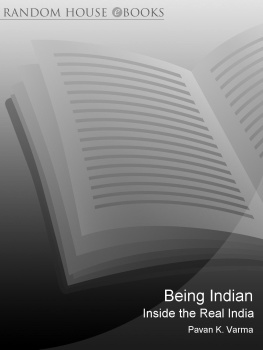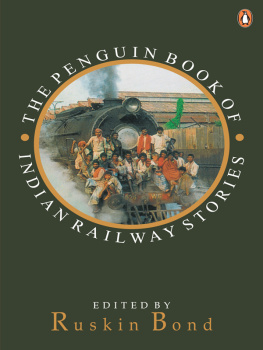Name Me a Word

Name Me a Word

Indian Writers Reflect on Writing
Edited by MEENA ALEXANDER

Published with assistance from the foundation established in memory of Philip Hamilton McMillan of the Class of 1894, Yale College.
Copyright 2018 by Meena Alexander.
All rights reserved.
This book may not be reproduced, in whole or in part, including illustrations, in any form (beyond that copying permitted by Sections 107 and 108 of the U.S. Copyright Law and except by reviewers for the public press), without written permission from the publishers.
Yale University Press books may be purchased in quantity for educational, business, or promotional use. For information, please e-mail (U.K. office).
Designed by Sonia Shannon.
Set in Fournier type by Integrated Publishing Solutions.
Printed in the United States of America.
Library of Congress Control Number: 2017958267
ISBN 978-0-300-22258-6 (pbk. : alk. paper)
A catalogue record for this book is available from the British Library.
This paper meets the requirements of ANSI/NISO Z39.48-1992 (Permanence of Paper).
10 9 8 7 6 5 4 3 2 1
For
my mother, Mary Alexander,
and in loving memory of my father,
George Alexander (192198)
Name me a word
Great, simple, vast as the sky
A word that has, like the intimate hand
Of the woman I have loved forever,
Washed the dirty innards of history.
JIBANANANDA DAS,
Name Me a Word (Amake ekti katha dao)
Contents

Preface

I
Hyderabad, monsoon season. I remember a table on a verandah, two wicker chairs, the scent of damp jasmine. I was a young writer trying to find her way in the sometimes bewildering world of Indian letters. Beside me sat Raja Rao with his white hair and elegant bearing. I had just taken him on a tour of the campus. He was particularly interested in the old stone walls and overgrown vegetation, and now he was talking to me about an invented English he used, a way of negotiating the multiple languages and worlds into which, in our separate ways, we were plunged. It was much later that I realized that before working the polished and yet jagged English he had perfected, Raja Rao had turned to his mother tongue, a necessity for him, writing a few stories quickly in Kannada. And so in France, where he was living at the time, he composed the fable-like novel Kanthapura set in an imagined Indian village. This is what he wrote in a 1938 preface to the novel: English is not really an alien language to us. It is the language of our intellectual make-uplike Sanskrit or Persian was beforebut not of our emotional make-up. [...] We cannot write like the English. We should not. We cannot write only as Indians. We have grown to look at the large world as a part of us. He went on to argue that time alone would justify the English that Indians used, just as it had done for the Irish and Americans.
Surely that time has come. A wave of Indian writing in English, both from the subcontinent and the diaspora, has swept over us. A little over four decades after Raja Raos preface, Salman Rushdie burst onto the world stage with Midnights Children. And it was clear that for Indians, the large world that Raja Rao evoked was indeed, part of us. The English language Rushdie created through multiple, cacophonous voices broke open a whole new landscape for post-independence writing, creating yet another layer to what was already a palimpsestIndian regional languages and the English that sprouted from them, and through them, revealing the mixed and vibrant world of the subcontinent. Indeed, the porous slipping borders of multiple languages that Indian writers inherit is often in evidence, if not overtly in the work, whatever the language of composition, then in its dream life, the undertow that takes hold of the reader and tugs her in.
II
In his poem Name Me a Word, the Bengali poet Jibanananda Das searches for a word that even as it evokes the vastness of the sky, possesses the delicate power of touch that only love can bringa womans hand capable of cleansing the dirty innards of history. The poem that dwells on what it means to name ends with the evocation of a supernal thirst that birds possessand by extension the maker of words and all who seek the mortal power of language. His poem seems the perfect invocation of this gathering of voices, reflections by Indian writers over the course of a century and more, writing in multiple languages. Poems, fictions, essays, and notes are all gathered here, a veritable river of words into which many languages flow.
I have put this anthology together in the hope of clarifying a multifoliate pattern in twentieth-century Indian writing. Each of the writers reveals something of the intricate emotion and thought involved in the process of writing, either through a direct reflection on the act or in more allusive fashion. And there are powerful impulses behind the choice of materials for an anthology that begins with the early twentieth century and reaches into the early twenty-first. Whether it is the writing by Rabindranath Tagore in his native Bengali, his own life straddling the border between the nineteenth and twentieth centuries, or poems by the Dalit poet S. Sukirtharani in the early twenty-first century (Dalit being a term for those formerly known as Untouchable), we as readers face the knotty issues of embodiment and self-creation, dislocation and belonging. Through the flow of the selections, I hope to reveal various kinds of literary cross-pollinationhow the writers speak to each other, and oftentimes with the ghosts of others; how issues and themes ripple and flow with fine variations across temporal and linguistic borders.
There are recurring themes of identity and embodiment, language and community and the tensions involved in the public act of becoming an author. And there are sharp contrasts in self-apprehensionhow the writer reveals her or his sense of selffor example, between Sarojini Naidu in the earlier part of the twentieth century caught within the overarching presence of British imperialism, expressing herself in English, and Sukirtharani in the early twenty-first, a Dalit woman searching to carve out her own identity in the Tamil language, in a republic that would cast her out.
The works are arranged chronologically so that lines of access and influence emerge. In the earliest material we sense the colonial presence of the British and the struggle for national visibility. Indeed, questions of selfhood and nation, of language and authorship become highlighted in the era of anticolonial struggle, and many of the earlier writers, even if they are not directly followers of Gandhi, are in some measure touched and molded by Gandhian nationalism. But there are others, particularly some Dalit writers in the second half of the twentieth century, for whom the nonviolent ideals of Indian nationalism ring hollow. In their view, the community of those formerly known as Untouchable, relegated to Outcaste status, need to forge a radically different vision of language and belonging.
Next page


